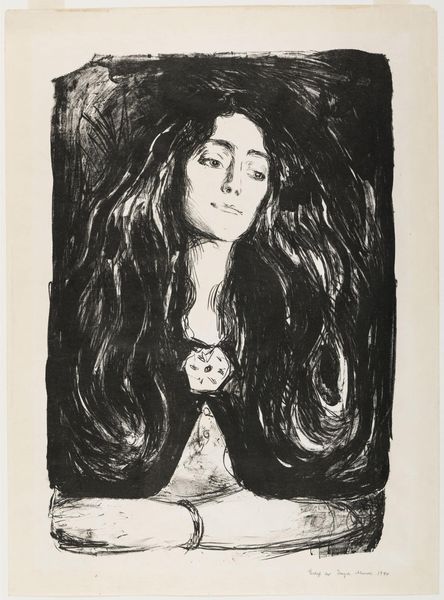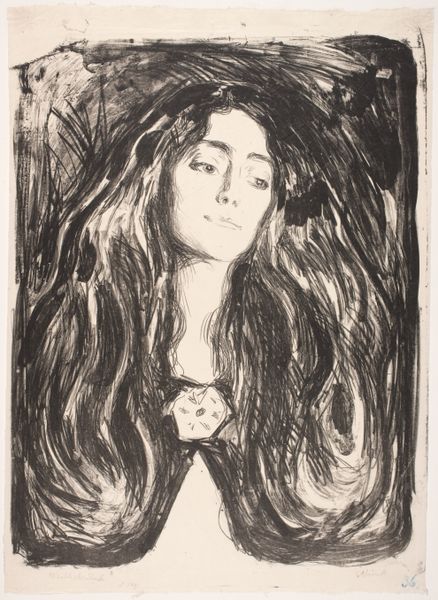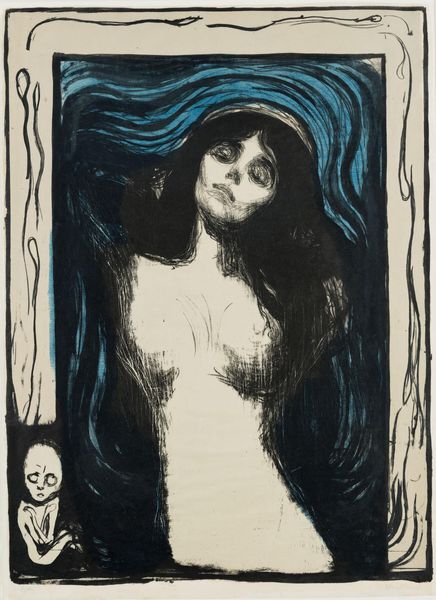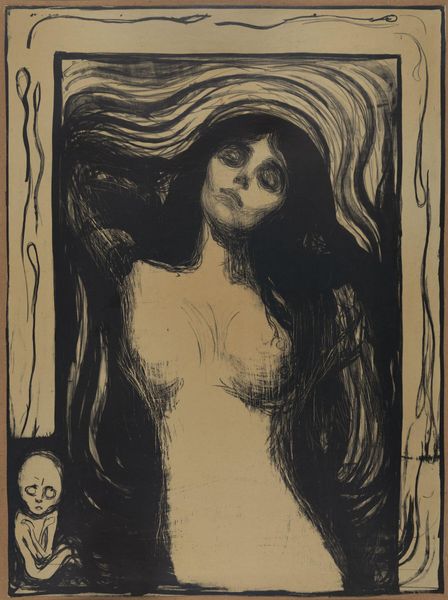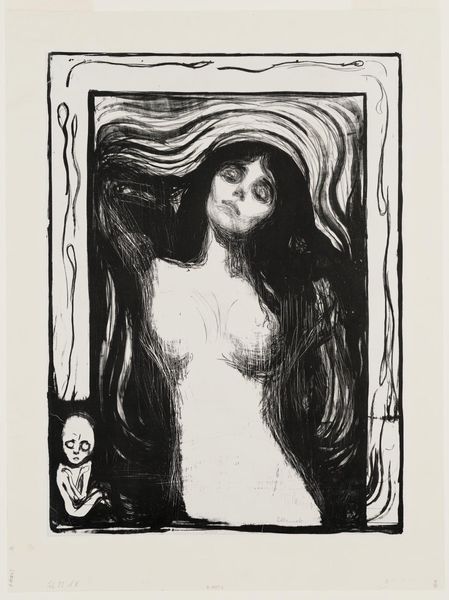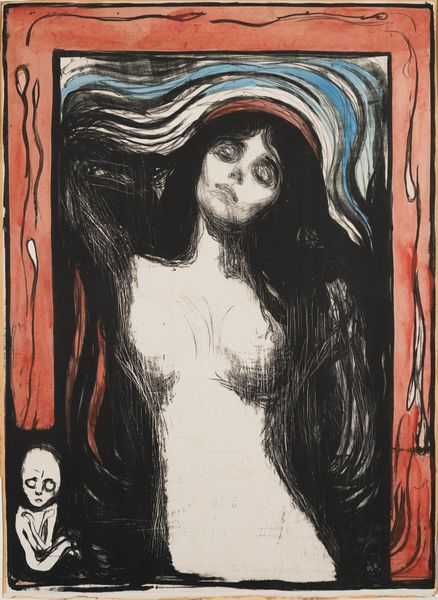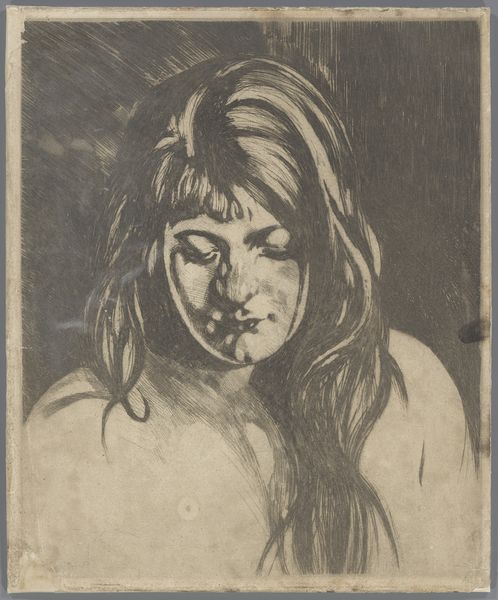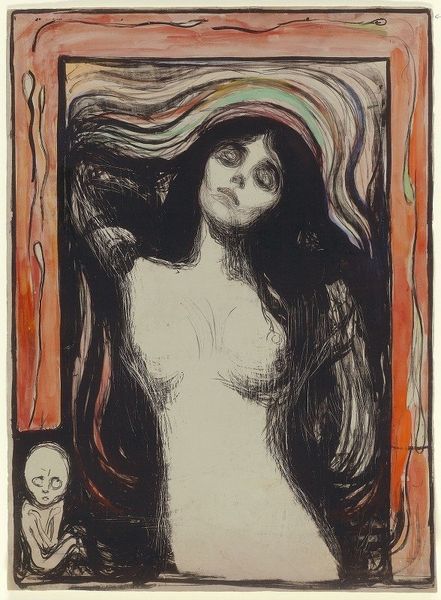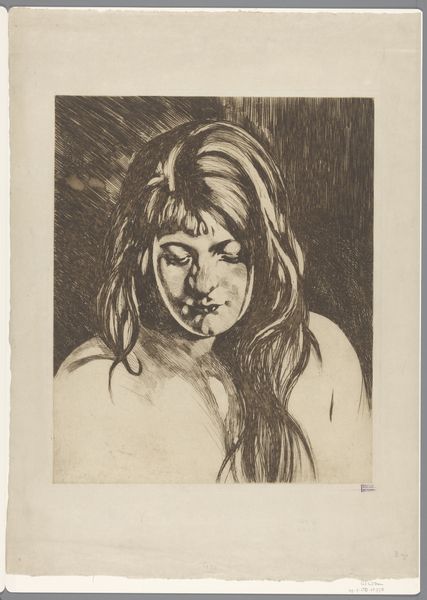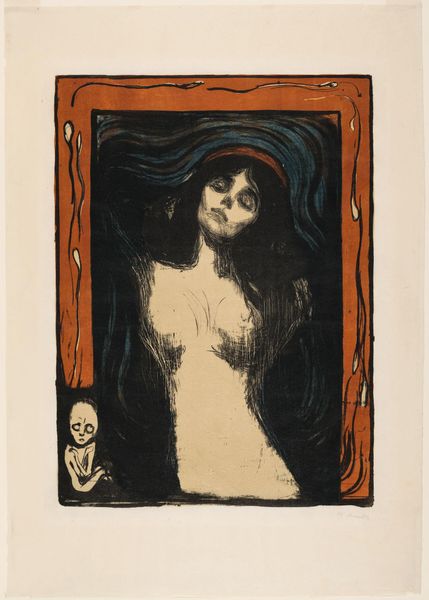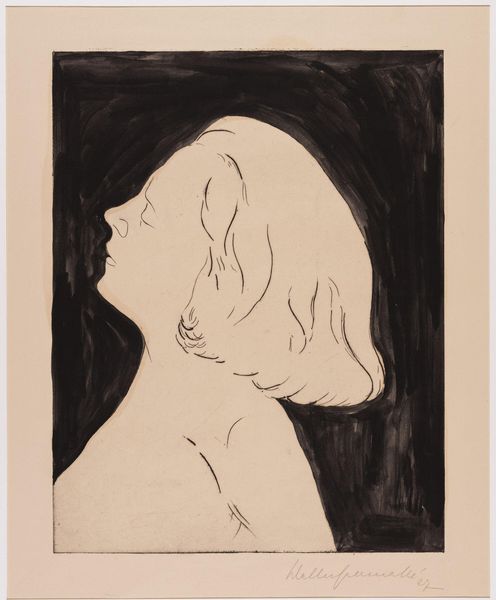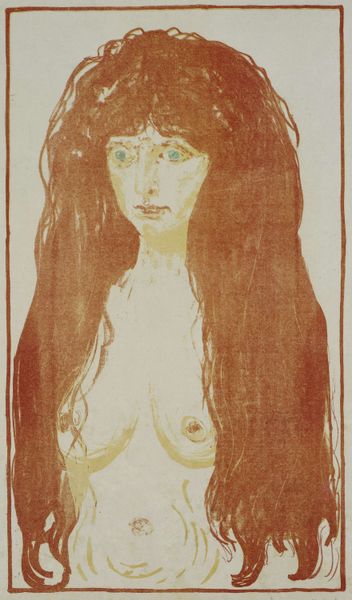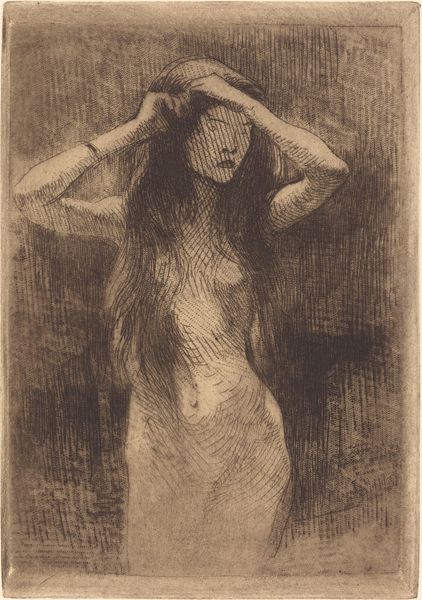
drawing, lithograph, print, paper
#
portrait
#
drawing
#
lithograph
# print
#
caricature
#
figuration
#
paper
#
expressionism
#
line
#
symbolism
Dimensions: 608 × 470 mm (image); 782 × 565 mm (sheet)
Copyright: Public Domain
Curator: This somber yet strangely inviting portrait is entitled "The Brooch. Eva Mudocci," a lithograph made in 1903 by Edvard Munch. It's currently housed here at the Art Institute of Chicago. Editor: Its immediate impact is one of shadows and veiled emotion. The somber palette intensifies the subject’s faraway gaze. Curator: Absolutely. This image goes far beyond mere representation. Eva Mudocci, a celebrated violinist, was not only Munch's muse but also, some historians argue, a lover. Her identity as a biracial, queer artist deeply resonated with the avant-garde circles in which both she and Munch traveled. Their unconventional relationship challenged the restrictive societal norms of the era. Editor: Considering the lithographic technique—the stark contrasts achieved with such simple lines, it lends an immediacy and raw emotional charge to the image. The composition itself, with her hair serving almost as a frame, focuses our attention so tightly on her face and the eponymous brooch. Curator: It's a testament to Munch’s awareness of female artists asserting their autonomy at the turn of the century, isn't it? The way he’s chosen to portray Eva...her expression hints at intelligence and independence rather than passive objectification. This stands in stark contrast to more conventional portrayals of women during that time. The work’s power lies in its ambiguity – in the stories it invites us to consider regarding artistic freedom, collaboration, and complex personal dynamics. Editor: Precisely. The seeming simplicity is deceiving. The interplay between light and shadow guides our eyes. Munch uses minimal detail to powerful effect. Semiotically, it feels potent in its suggestion—more than outright pronouncement. The darkness surrounding Eva—a darkness that seems almost part of her, gives the piece such depth. Curator: I see in it a radical portrayal of a woman at a time when societal structures imposed such limitations, while you’re more focused on the lines, their impact, and how those formal components shape our perception. It is truly an endlessly engaging artwork. Editor: Yes, a work ripe with complexities—stylistically and contextually, urging continued conversation and observation.
Comments
No comments
Be the first to comment and join the conversation on the ultimate creative platform.
